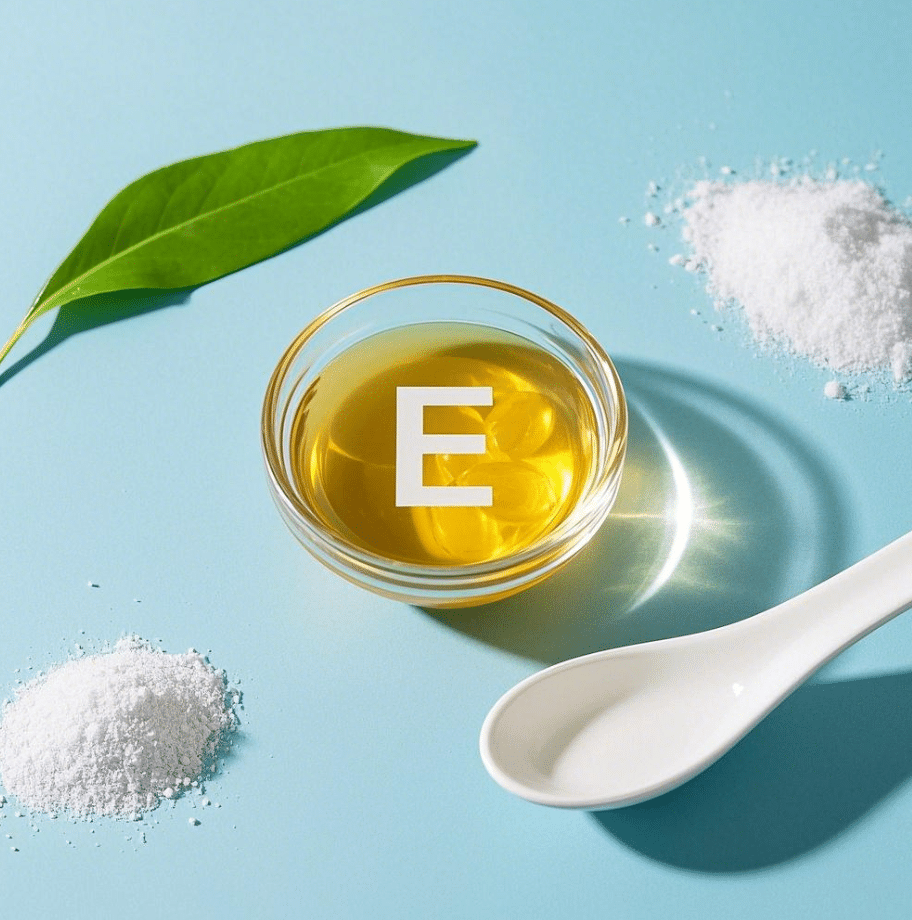
senteti̇k e vi̇tami̇ni̇ üreti̇ci̇si̇
Tipik olarak DL-alfa-tokoferil asetat olarak bulunan Sentetik E Vitamini, çeşitli uygulamalarda hayati bir antioksidan olarak hizmet eden laboratuvarda üretilen bir E vitamini formudur. Tokoferoller ve tokotrienollerin bir karışımı olan doğal E vitamininin aksine, sentetik E vitamini tek, rasemik bir alfa-tokoferol karışımıdır. Mükemmel stabilitesi ve maliyet etkinliği nedeniyle yaygın olarak kullanılmaktadır. Birincil sentetik E vitamini faydaları, hücreleri serbest radikallerin neden olduğu oksidatif hasardan korumaya yardımcı olan güçlü antioksidan özelliklerinden kaynaklanmaktadır. Bu da onu genel hücresel sağlığı korumak, bağışıklık sistemini desteklemek ve sağlıklı cildi teşvik etmek için çok önemli hale getirir. Stabil yapısı diyet takviyelerine, güçlendirilmiş gıdalara, kozmetiklere ve hayvan yemlerine kolayca dahil edilmesine olanak tanıyarak E vitamininin koruyucu avantajlarının tutarlı bir şekilde sunulmasını sağlar.
Lütfen unutmayın: Biz bir toptan tedarikçiyiz ve minimum sipariş miktarlarımız var.
Bu ürün hakkında sorularınız mı var? Ekibimiz size yardımcı olmak için burada. Birden fazla içerikle ilgili sorularınız için lütfen Bize Ulaşın seçeneğini seçin ve mesajınıza içerik listesini ekleyin.
- CAS No: 7695-91-2
- Kimyasal Adı: DL-alfa-Tokoferil asetat
- Eş anlamlılar: E vitamini asetat (sentetik); All-rac-alfa-Tokoferil asetat; Alfa-tokoferil asetat (DL-formu); DL-alfa-Tokoferol asetat
- CB Numarası: CB5854884
- Moleküler Formül: C31H52O3
- Moleküler Ağırlık: 472,74 g/mol
- MDL Numarası: MFCD00008069
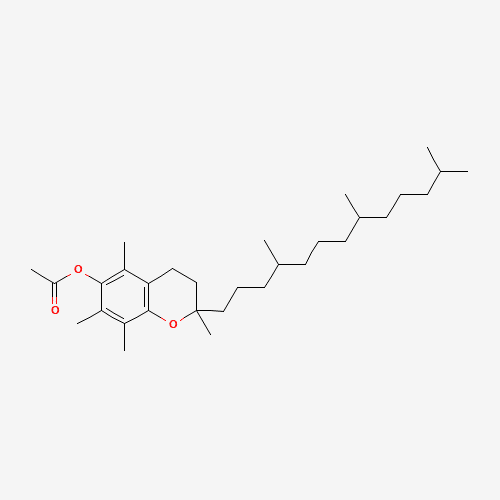
Sentetik E Vitamini Üretim Süreci
Hammadde Tedariki ve Hazırlama
Trimetilhidrokinon ve izofitol gibi petrol türevi hammaddelerle başlanır. Bu öncüller, sentetik E vitamini sentezi için gereken başlangıç saflığını sağlamak için titiz bir saflaştırma işleminden geçirilir.
Kondenzasyon Reaksiyonu (Tokoferol Sentezi)
Saflaştırılmış trimetilhidrokinon, genellikle asitler tarafından katalize edilen bir yoğunlaşma reaksiyonunda izofitol ile reaksiyona sokulur. Bu reaksiyon tokoferol çekirdeğini, özellikle de sentetik E vitamininin temeli olan DL-alfa-tokoferolü oluşturur.
Esterleştirme (Asetilasyon)
Sentezlenen DL-alfa-tokoferol daha sonra tipik olarak asetik anhidrit veya asetil klorür ile esterleştirilir. Bu önemli adım, alkol grubunu bir asetat estere dönüştürerek DL-alfa-tokoferil asetat oluşturur, stabilitesini artırır ve oksidasyonu önler.
Arındırma ve Arıtma
Distilasyon, filtrasyon ve solvent ekstraksiyonu dahil olmak üzere kapsamlı saflaştırma aşamaları takip eder. Bu işlemler safsızlıkları, reaksiyona girmemiş başlangıç maddelerini ve yan ürünleri gidererek farmasötik ve gıda sınıfı sentetik E vitamini için gereken yüksek saflığı sağlar.
Konsantrasyon ve Standardizasyon
Saflaştırılmış DL-alfa-tokoferil asetat istenen güce ulaşmak için konsantre edilir. Bunu, belirli uluslararası birim (IU) gereksinimlerini karşılamak için standardizasyon izler ve nihai sentetik E vitamini ürünü için tutarlı güç ve kalite sağlar.
Kalite Kontrol ve Paketleme
Nihai sentetik E vitamini saflık, etki gücü, stabilite ve diğer kritik özellikler açısından titiz kalite kontrol testlerinden geçirilir. Onaylandıktan sonra, bütünlüğünü korumak ve dağıtımdan önce raf ömrünü uzatmak için genellikle inert gaz altında hava geçirmez kaplarda dikkatlice paketlenir.
Sentetik E Vitamini Tedarikçiniz Olarak Neden Gensei'yi Seçmelisiniz?
Sentetik E Vitamini tedarikçiniz olarak Gensei'yi seçmek, mükemmellik ve güvenilirliğe olan bağlılığıyla tanınan lider bir Sentetik E Vitamini üreticisi ile ortaklık kurmak anlamına gelir. DL-alfa-tokoferil asetatın takviyelerden kozmetiklere kadar çeşitli endüstrilerdeki kritik rolünün farkındayız. Gelişmiş üretim süreçlerimiz, Sentetik E Vitaminimizin sıkı saflık ve etki standartlarını sürekli olarak karşılamasını ve sağlam sentetik E vitamini faydaları sunmasını sağlar. İstikrarlı ve tutarlı bir tedariki garanti eden yüksek verimli ve kalite kontrollü üretim hattımızla gurur duyuyoruz. Gensei ile, üstün sentetik E vitamini sağlamaya adanmış, uzman teknik destek ve küresel bir dağıtım ağı ile desteklenen, formülasyonlarınızın optimum performansa ulaşmasını sağlayan güvenilir bir ortak kazanırsınız.
Sentetik E Vitamininin Özellikleri
- Yüksek Stabilite: DL-alfa-tokoferil asetat olarak oksidasyona, ısıya ve ışığa karşı oldukça kararlıdır ve formülasyonlarda uzun süreli etki sağlar.
- Uygun Maliyetli: Doğal E vitaminine ekonomik bir alternatif sunarken önemli antioksidan faydalar sağlar.
- Çok Yönlü Formlar: Tozlar ve yağlar dahil olmak üzere çeşitli formlarda mevcuttur ve farklı ürün türlerine kolaylıkla dahil edilebilir.
- Tutarlı Saflık: Güvenilir performans için tutarlı ve yüksek düzeyde saflık sağlayan sıkı kalite kontrol altında üretilmiştir.
- Geniş Uygulamalar: Diyet takviyeleri, gıda, kozmetik ve hayvan yemlerinde geniş bir kullanım yelpazesi için uygundur.
Sentetik E Vitamini Uygulama Senaryoları:
- Besin Takviyeleri: Sentetik E vitamini faydalarından yararlanarak genel sağlığı, bağışıklık fonksiyonunu ve kardiyovasküler sağlığı desteklemek için multivitaminlerde ve antioksidan takviyelerinde yaygın olarak kullanılır.
- Güçlendirilmiş Gıdalar: Tazeliğini korumak ve besin değerini artırmak için tahıllara, süt ürünlerine ve unlu mamullere antioksidan olarak katılır.
- Kozmetik ve Cilt Bakımı: Cilt hücrelerini hasardan koruyan ve cilt sağlığını destekleyen antioksidan özellikleri nedeniyle yaşlanma karşıtı kremlerde, losyonlarda ve güneş kremlerinde popüler bir bileşen.
- Hayvan Besleme: Hayvan büyümesini, bağışıklık tepkisini ve üreme sağlığını desteklemek için hayvan yemi formülasyonlarına eklenir.
- İlaçlar: Bazı farmasötik preparatlarda antioksidan ve hücreler üzerindeki koruyucu etkileri için kullanılır.
Son Teknoloji Üretim Tesislerimiz
Vitaminlerinizin, bitkisel özlerinizin, minerallerinizin ve amino asitlerinizin üretiminde en yüksek kaliteyi sağlamak için ileri teknoloji ile donatılmış modern tesislerimizi keşfedin.

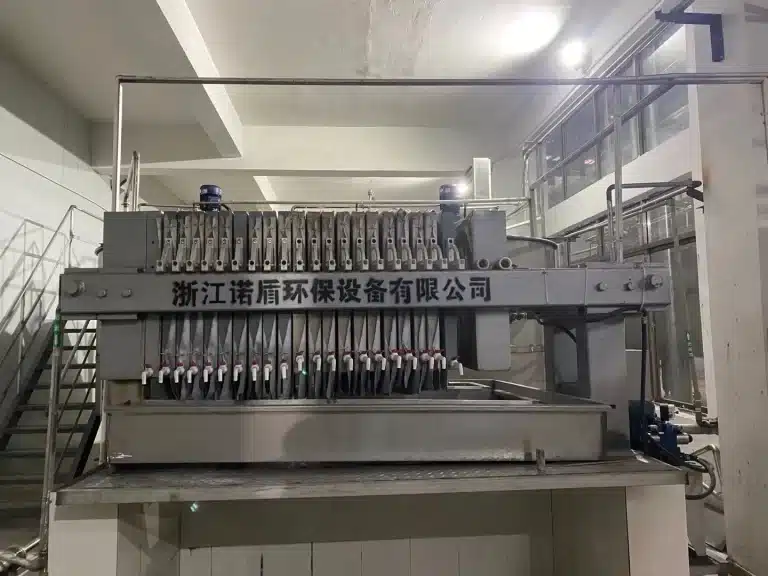
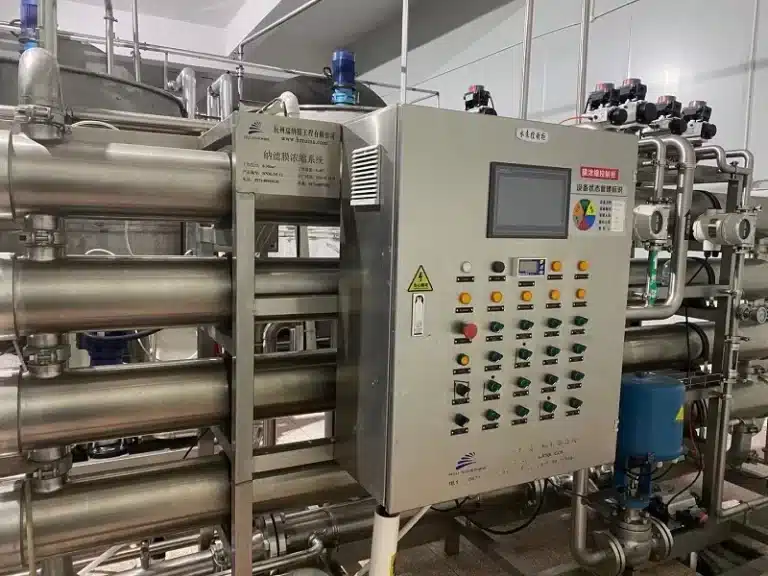

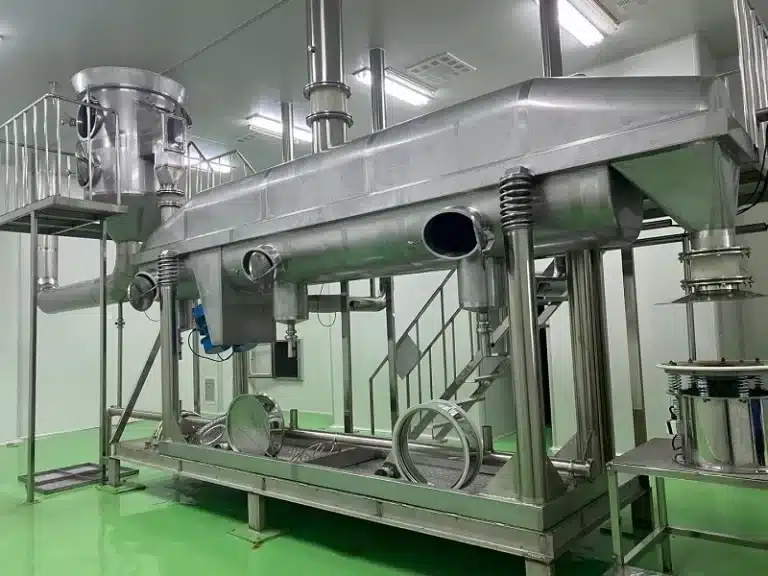
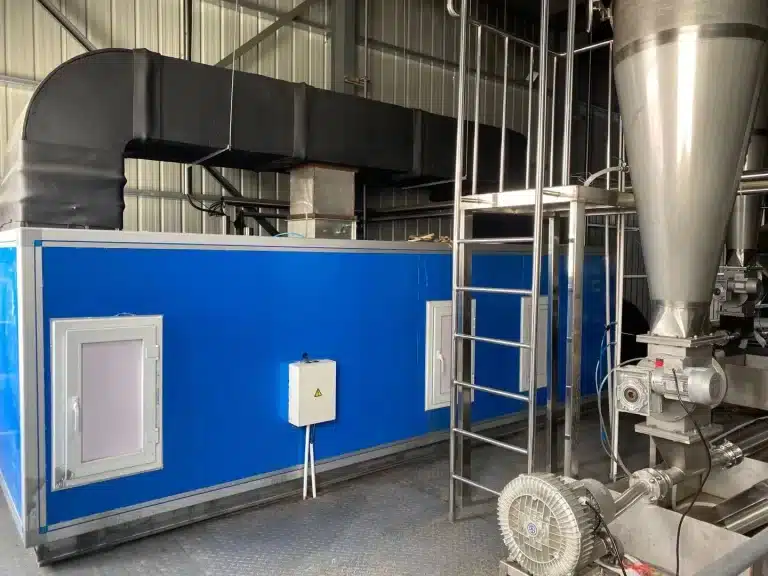

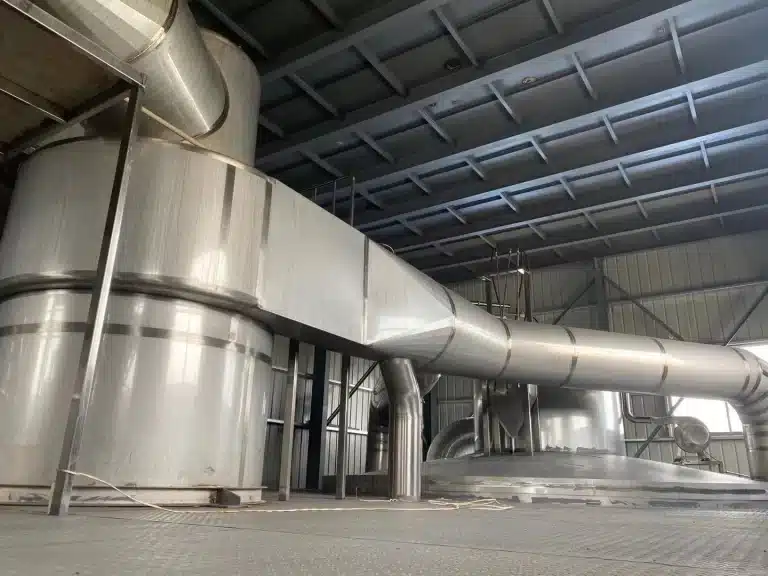



SSS
Sentetik E vitamini tipik olarak petrol türevi kimyasallardan, özellikle trimetilhidrokinon ve izofitolden, DL-alfa-tokoferil asetat üretmek için bir dizi kimyasal reaksiyon yoluyla yapılır.
Başlıca sentetik E vitamini faydaları arasında hücreleri oksidatif hasardan koruyan, bağışıklık fonksiyonunu destekleyen, cilt sağlığını teşvik eden ve genel hücresel bütünlüğe katkıda bulunan güçlü antioksidan özellikleri yer alır
Sentetik E vitamini (DL-alfa-tokoferil asetat) tek bir izomerdir ve doğal E vitaminine (D-alfa-tokoferol) kıyasla miligram başına yaklaşık yarı biyolojik aktiviteye sahip olsa da, antioksidan faydalar sağlamada hala etkilidir.
Sentetik E vitamini, oksidasyona, ısıya ve ışığa karşı mükemmel stabilitesi nedeniyle yaygın olarak kullanılmaktadır ve bu da onu uzun raf ömürlü formülasyonlar için ideal hale getirmektedir. Ayrıca doğal E vitaminine göre üretimi genellikle daha uygun maliyetlidir.
Önerilen günlük miktarlar dahilinde tüketildiğinde, sentetik E vitamini genellikle güvenlidir. Özellikle takviyelerden aşırı alım, kanama komplikasyonları gibi yan etkilere yol açabilir, bu nedenle kılavuzlara uyulması önemlidir.
Sentetik E vitamini, antioksidan ve cildi iyileştirici özellikleri nedeniyle popüler bir kozmetik bileşenidir. Yaşlanma belirtilerini azaltmaya ve cildi çevresel stres faktörlerinden korumaya yardımcı olmak için genellikle kremlere, losyonlara ve serumlara dahil edilir.
Yüksek stabilitesi nedeniyle sentetik E vitamini (DL-alfa-tokoferil asetat), ışıktan uzak, serin ve kuru koşullarda uygun şekilde saklandığında genellikle 24 ila 36 ay veya daha uzun bir raf ömrüne sahiptir.
Evet, sentetik E vitamini gıdalarda etkili bir antioksidandır. Katı ve sıvı yağlardaki ekşimeyi önlemek, bazı işlenmiş gıdaların raf ömrünü uzatmak ve tazeliklerini ve besin kalitelerini korumaya yardımcı olmak için kullanılır.
En yaygın formu, kararlı bir ester olan DL-alfa-tokoferil asetattır. Yağlı bir sıvı olarak veya toz formlarda bulunabilir, bu da onu çeşitli uygulamalar için uygun hale getirir.
Doğal E vitamini (D-alfa-tokoferol), stereokimyasal farklılıklar nedeniyle genellikle vücut tarafından sentetik E vitamininden (DL-alfa-tokoferol) daha verimli bir şekilde emilir ve kullanılır. Bununla birlikte, her iki form da antioksidan aktivite sağlar.

